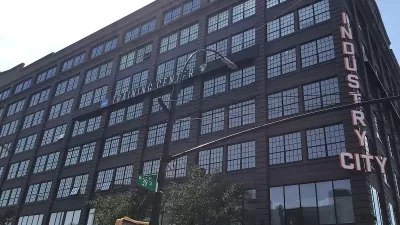The New York Times notes the gentrification of Fort Greene, but caters to the people would looking for places to live in the neighborhood.

Julie Lasky reports from Fort Green, a neighborhood located in the northwest of the borough of Brooklyn in New York City, which has undergone rapid change in recent years.
Fort Greene is a historically African-American neighborhood, which hosted a cultural revival in the 1980s and 1990s that has been compared to the Harlem Renaissance. According to the Furman Center at New York University, the black population in Community District 2, comprising Fort Greene and Brooklyn Heights, was 25.8 percent in 2017, down from 41.8 percent in 2000.
Still, even recently the neighborhood was missing amenities, like access to banks, because of the "economic ravages of 1970s New York," according to Lasky.
The article functions as a visitors guide to the neighborhood for outsiders (including people looking to buy or rent in the neighborhood) while also providing a review of the land use and development controversies of 2019 Fort Greene.
Filmmaker Spike Lee is a native of Fort Greene, and a famous critic of gentrification, and the varying depictions of the neighborhood in Lee's work make a cameo in the article as well.
FULL STORY: Fort Greene, Brooklyn: Riding the Wave of Gentrification

Alabama: Trump Terminates Settlements for Black Communities Harmed By Raw Sewage
Trump deemed the landmark civil rights agreement “illegal DEI and environmental justice policy.”

Planetizen Federal Action Tracker
A weekly monitor of how Trump’s orders and actions are impacting planners and planning in America.

The 120 Year Old Tiny Home Villages That Sheltered San Francisco’s Earthquake Refugees
More than a century ago, San Francisco mobilized to house thousands of residents displaced by the 1906 earthquake. Could their strategy offer a model for the present?

In Both Crashes and Crime, Public Transportation is Far Safer than Driving
Contrary to popular assumptions, public transportation has far lower crash and crime rates than automobile travel. For safer communities, improve and encourage transit travel.

Report: Zoning Reforms Should Complement Nashville’s Ambitious Transit Plan
Without reform, restrictive zoning codes will limit the impact of the city’s planned transit expansion and could exclude some of the residents who depend on transit the most.

Judge Orders Release of Frozen IRA, IIJA Funding
The decision is a victory for environmental groups who charged that freezing funds for critical infrastructure and disaster response programs caused “real and irreparable harm” to communities.
Urban Design for Planners 1: Software Tools
This six-course series explores essential urban design concepts using open source software and equips planners with the tools they need to participate fully in the urban design process.
Planning for Universal Design
Learn the tools for implementing Universal Design in planning regulations.
Clanton & Associates, Inc.
Jessamine County Fiscal Court
Institute for Housing and Urban Development Studies (IHS)
City of Grandview
Harvard GSD Executive Education
Toledo-Lucas County Plan Commissions
Salt Lake City
NYU Wagner Graduate School of Public Service





























